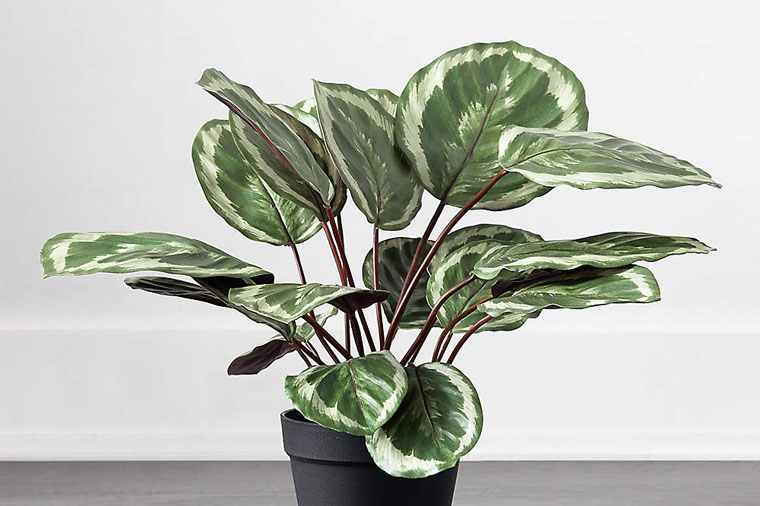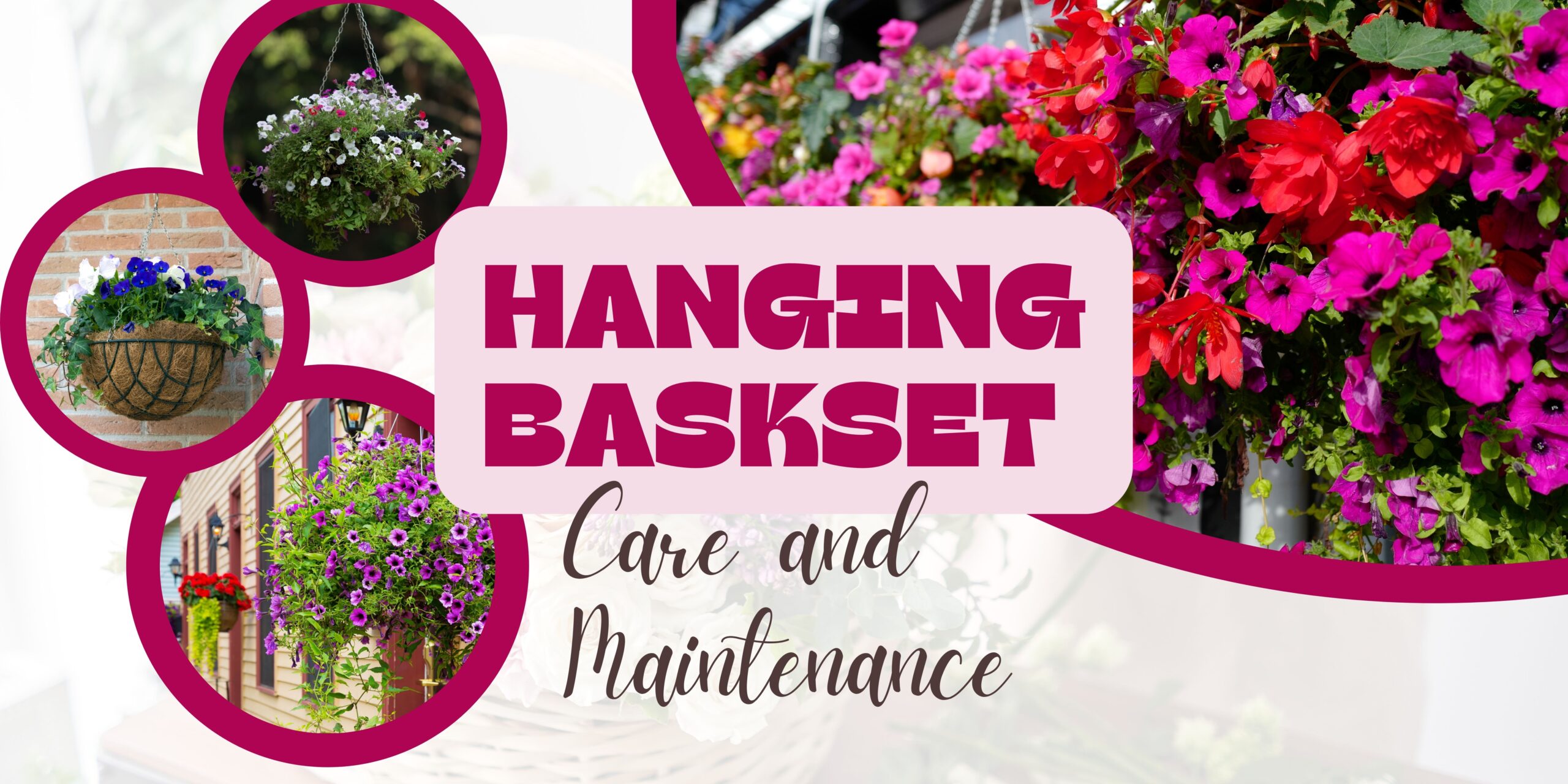All About Calathea
The Calathea family of plants originate from the undergrowth of tropical forests. For this reason, they have an unfortunately well-deserved reputation for being temperamental in our climate, but only because our home conditions are so different from their natural habitat. If you lived in a greenhouse with average highs of 90ºF and 90% humidity, the plant would be easy to care for.
Despite being a bit temperamental, they are a beautiful species with a unique feature and a well loved houseplant. Calatheas have active leaves that move by nyctinasty in response to temperature and light. The foliage isn’t quite as dramatic in their movements as their cousin, the Prayer Plant, but they do perform a slow daily dance and rise at night.
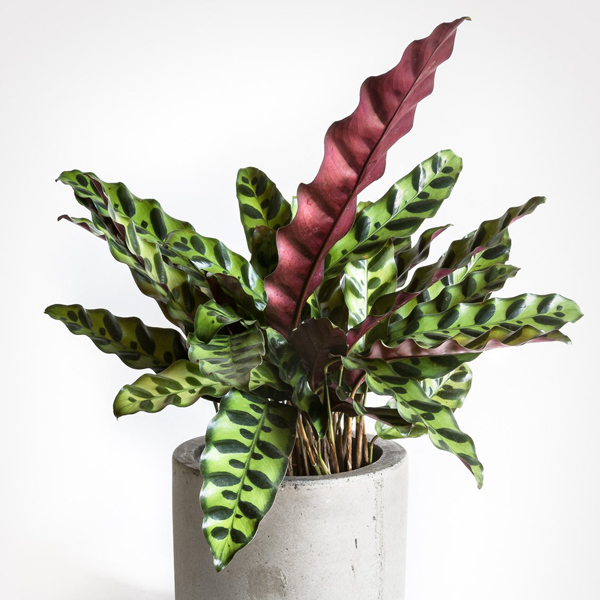
Calathea lancifolia ‘Rattlesnake’
The Rattlesnake can grow up to 30 inches tall. It’s large leaves that have a variegated pattern with various shades of green and a wavy shape along their edges. Even the undersides of the foliage are eye-catching with their beautiful purplish-red tones. It grows at a moderate rate indoors but will slow or stop growing if the plant is put in unfavourable conditions.
TIP : This variety needs more humidity than some others.
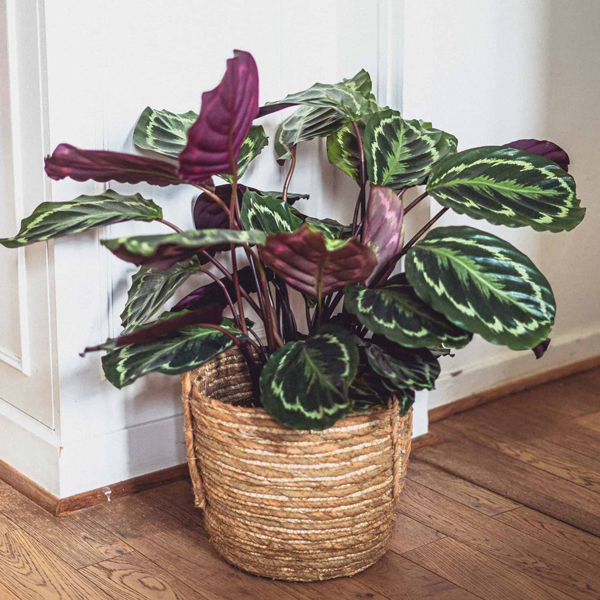
Calathea roseopicta ‘Medallion’
Calathea Medallion AKA Calathea veitchiana is arguably one of the most beautiful low-light plants. They are pretty popular to houseplant enthusiasts because of their large, “medallion”-like leaves with a brilliant green pattern on top and deep burgundy underneath. However, this is not recommend a plant for beginners.
TIP : Do not soak the soil with water, but also do not allow to dry out. The Medallian is not drought tolerant so it will need a consistent watering schedule and daily misting.

Calathea zebrina
This variety has velvety patterned ovate leaves which are light green in colour with darker green stripes, like Zebra stripes. The underside of the leaves are purple and not always visible because leaves grow horizontally, although occasionally some will curve or grow more upright. It’s a clump forming plant that produces long stalks, up to 1 metre tall, and the leaves, 15 inches or more in length, sit at the top.
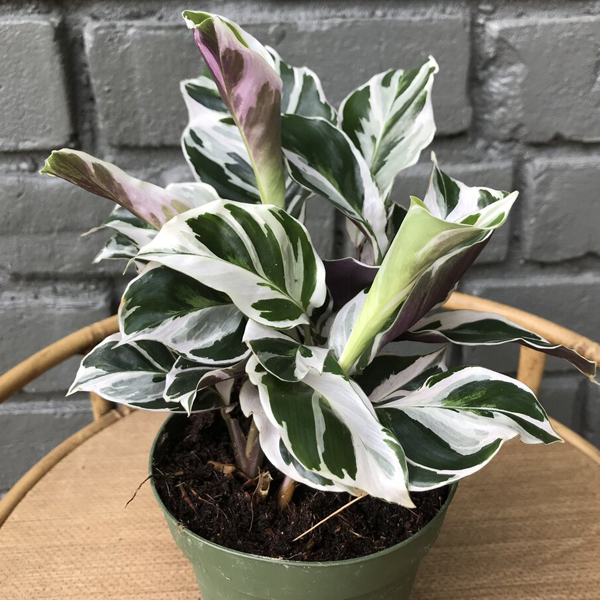
Calathea Fusion White
The top side of the Fusion White leaves feature contrasting white markings alongside the green and the underside has a pretty light purple-pinkish hue that also runs down the stems.
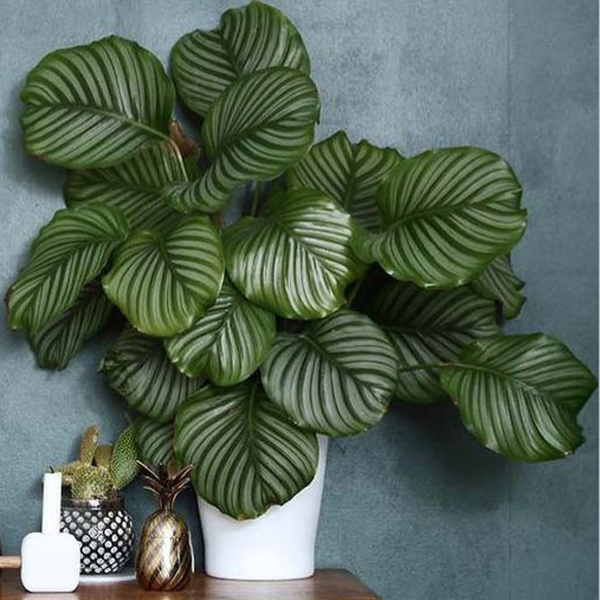
Calathea orbifloia
Calathea orbifolia plants have large, silvery-green leaves with pronounced dark-coloured veins.
TIP : Calathea orbifolia loves well-draining soil that never gets dry or soggy, medium light and high humidity.
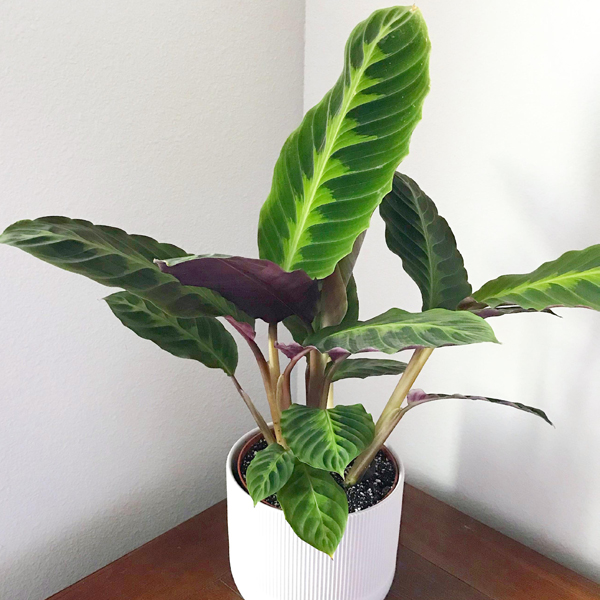
Calathea warscewiczii
Pronounced vark-zeh-wik-ZEE-eye and sometimes called the Jungle Velvet Calathea, is a large houseplant that can mature to 3-4 feet high and wide in optimal conditions.
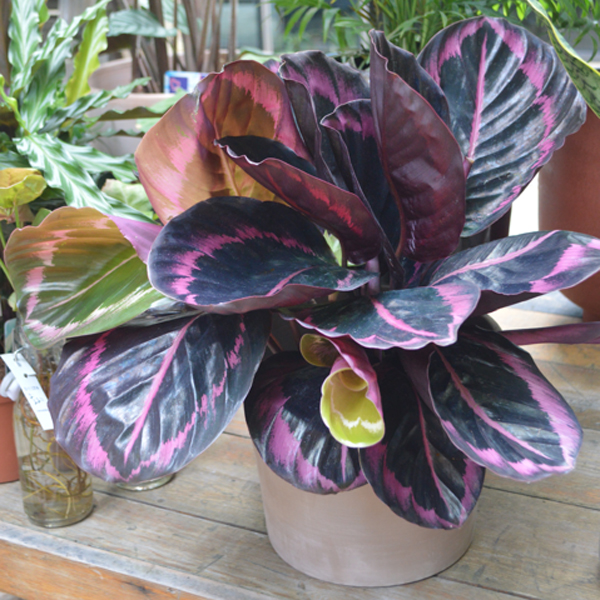
Calathea Dottie
The Dottie is characterized by its rich dark purple leaves and bright pink markings.
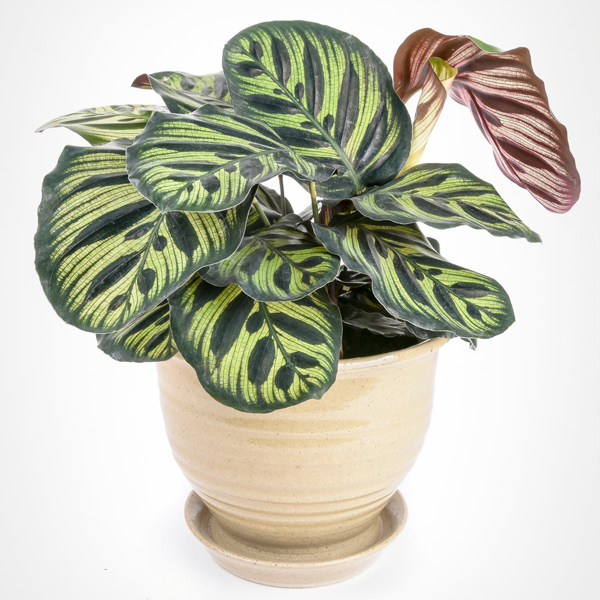
Calathea Peacock
The Peacock has contrasting green and purplish-red leaves identifiable by its unique pattern.
Plant Care
Light
The light requirements make this plant an attractive choice for lower light homes.
TIP : These plants do poorly in direct sun, which can bleach the leaves.
Soil
Calathea enjoy moist soil, but not wet soil. For an optimum growth medium, try a mix of 50 percent potting soil, 20 percent orchid bark, 20 percent charcoal, and 10 percent perlite.
Water
Like all houseplants, calathea enjoy filtered or dechlorinated water; however, it can be a little more demanding than other houseplants. Simply fill your watering can and leave it overnight to dissipate the chlorine. If there are other chemicals in your tap water, try using filtered or distilled water instead. They also dislike being dried out. Every few days, stick a finger in the soil to see if the medium feels dry. If it does, water generously, making sure that all excess water has been fully drained.
Humidity
Prayer plants enjoy a humid environment, but many varieties can handle lower levels of humidity. To increase the humidity, try using a humidifier near your plant or place a dish with rocks and water at the base of your plant. Be sure to top off the water dish regularly.
Propagation
Propagation can be done through root division. If you try to take a cutting from this plant you won’t have much luck. Instead wait until new shoots start appearing from out of the soil. When this happens take your plant out of its pot and gently pull the sections apart being careful not to damage any roots in the process. Once you have separated the segments repot the old plant and plant the new section into a pot of its own with a well draining potting mix.
Plant Problems
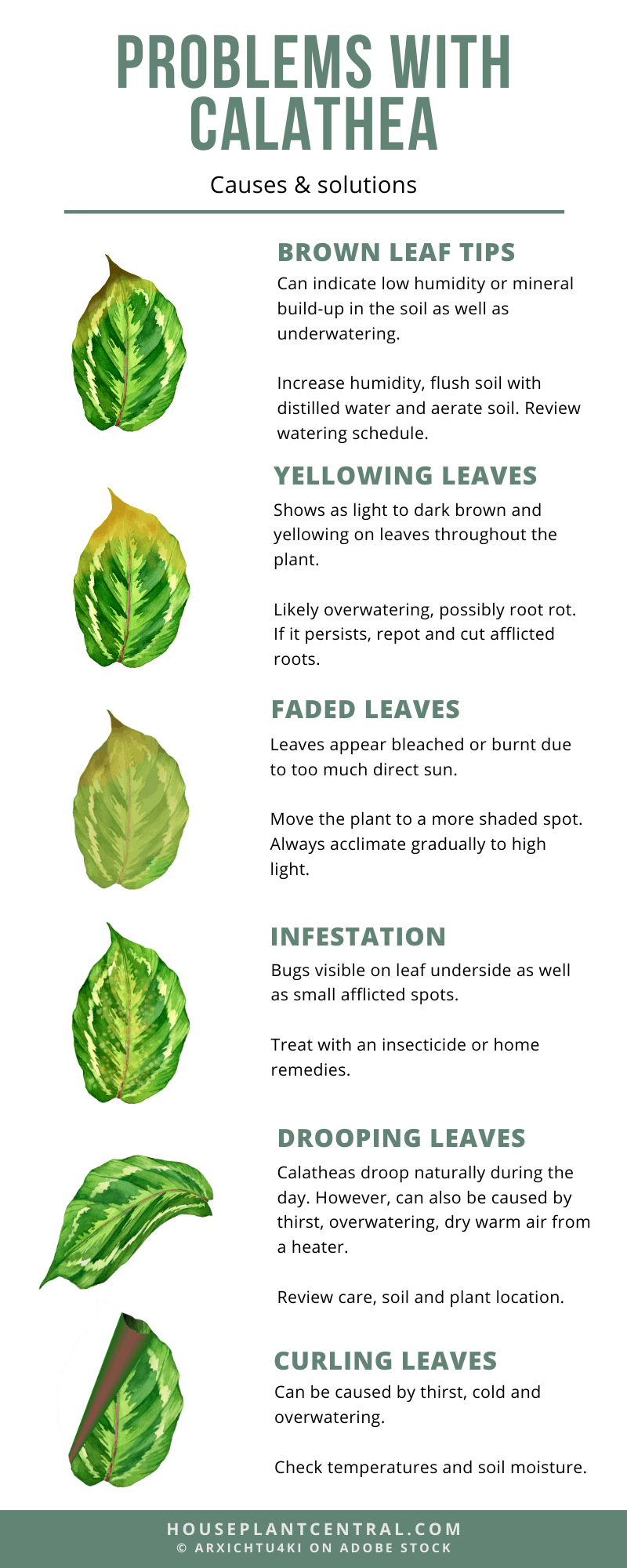
Overwatering
This can be caused accidentally, even if you don’t water that much, if your soil mixture is not well-draining enough. It can also happen if your plant doesn’t get enough light to process the water you’re giving.
Natural Leaf Loss
As a plant grows, it will reabsorb nutrients from lower leaves, turning them yellow and then crispy and brown before they drop. This is normal, so if it’s only lower leaves and they’re not yellowing at an alarming rate, you’re likely fine.
Over-Exposure to Sun Light
Suddenly being moved to a sunny place or simply receiving too much direct sun will cause leaves to yellow and crisp up. Also refer to the paragraph on natural leaf loss.
Plant is Cranky
Calatheas seem quite sensitive to changes such as being moved (like when you buy it), repotting, and division. If you just did any of those things, give your plant a few weeks to reacclimate.
Under-watering
Consistent under-watering can cause yellow leaves on a Calathea. However, you’d also expect to see some other symptoms, like leaf droop and leaf curl, before they start discolouring.
Over- or Under-feeding
You might have used too much fertilizer, which can be corrected by flushing the soil with distilled water. If you don’t fertilize, a bit of houseplant food every month or so during the growing season might help.
Leaves Curling and Wilting
This can be an indication that you’re not giving your plants enough water. What makes this even more frustrating is that it can also indicate that you’re overwatering instead! Or, it might also just be the plant being cranky due to being recently moved or repotted.
So how do you find out which one it is? By process of elimination.
If the Soil is Dry give the plant a drink and see if the leaves uncurl in the next few hours. If they do, adjust your watering schedule. You’ve been under-watering. This especially applies if the leaves are also turning crispy.
If the Soil is Moist but the leaves are wilting, aerate the soil by poking into it using a chopstick. This ensures water can reach the roots and improves air flow so soil doesn’t stay too wet for too long.
Leaves Still Wilting after that even though the soil is not dry? There’s a chance you overdid it and the roots are rotting, so you might have to uproot the plant to check.
 |
| 
